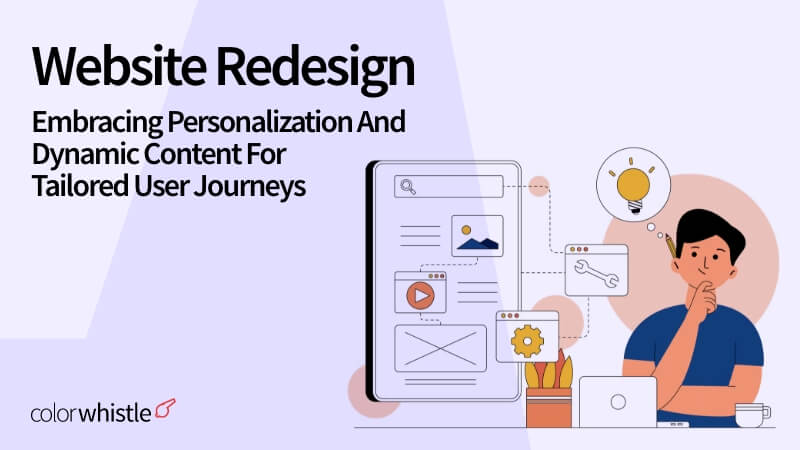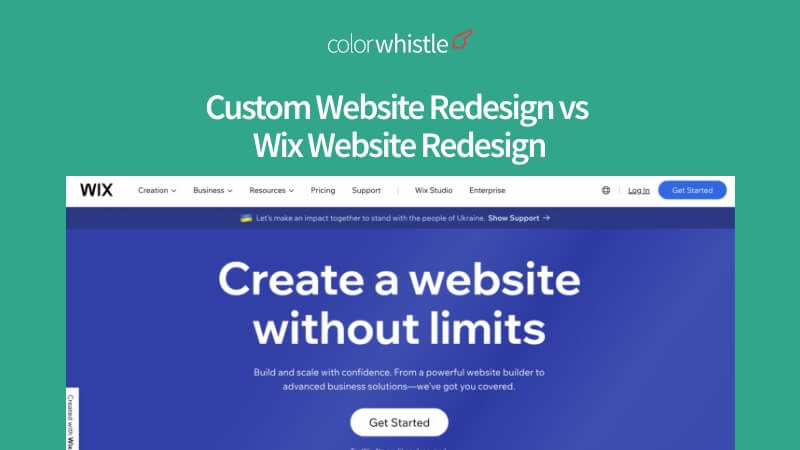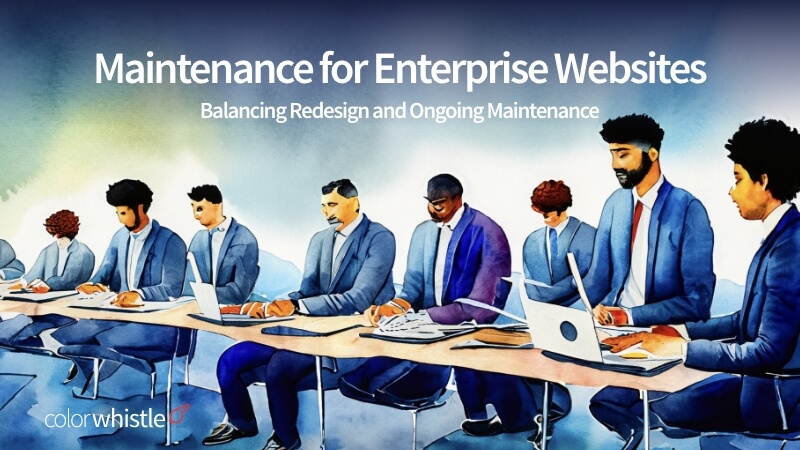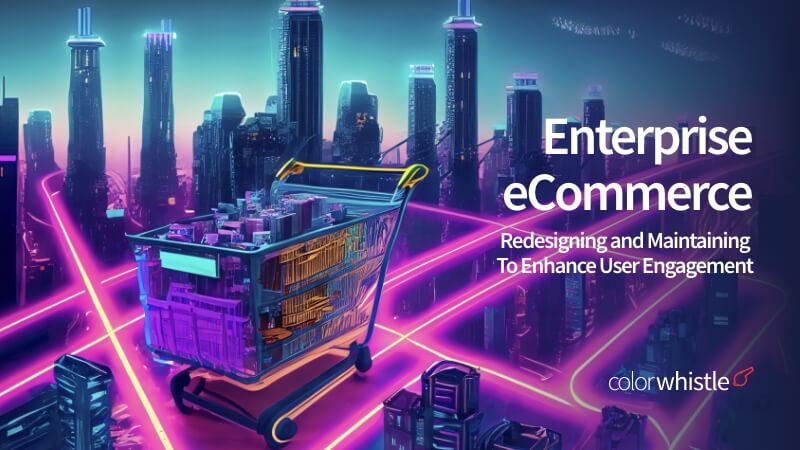In today’s digital space, where user expectations are high, website redesign services have become essential for businesses to stay relevant and engaging. A successful website redesign goes beyond aesthetics and focuses on improving the user experience to drive conversions and customer satisfaction.
Embracing personalization and dynamic content is a powerful approach to revamping websites, as it enables tailored user journeys that resonate with individual users. By understanding the importance of website redesign, and website user experience, businesses can unlock the potential for growth and success in the online world.
In this article for your better understanding, we have explored the e-commerce website development and SaaS industry in the aspects of website redesign as their success heavily depends on the user experience and engagement.
How Important Are Personalization, Dynamic Content, and User Journey when Aiming at Website Redesign?
Personalization, dynamic content, and optimizing the user journey are incredibly important for a website redesign. These elements are crucial in enhancing the overall user experience, increasing user engagement, and driving conversions. By tailoring the website to individual user preferences and behaviors, businesses can create a personalized and relevant experience that captures user attention and encourages interaction. Personalization and dynamic content not only keep users engaged but also improve conversion rates by providing targeted product recommendations, customized offers, and persuasive user interfaces.

Optimizing the user journey, from initial awareness to post-purchase activities, fosters customer retention and loyalty, as it focuses on delivering seamless experiences and valuable post-purchase support.
Also Read
Implementing personalization, dynamic content, and a well-optimized user journey gives businesses a competitive advantage in the digital landscape, positioning them as leaders in their industry.
Moreover, these elements generate valuable user data, allowing businesses to gain insights that inform future marketing strategies and website improvements. Ultimately, prioritizing personalization, dynamic content, and the user journey in a website revamp or redesign is crucial for attracting and retaining users in today’s digital world.
Website Redesign – Personalization
Personalization refers to tailoring a website’s content, design, and recommendations to match individual user preferences, interests, and behaviors to drive better user experience and increase revenue. It is all about leveraging user data to deliver relevant and targeted experiences, creating a sense of uniqueness for each visitor. The key aspects of personalization are,
User Data Collection
Gathering of user data through various means, including cookies, registration forms, and user behavior tracking. This data can include demographic information, browsing history, purchase behavior, and more.
Segmentation and Targeting
Businesses utilize the collected data to segregate their user base into segments or personas. This helps with personalized content delivery to specific groups, enabling more effective marketing campaigns and user experiences.
Personalized Content and Recommendations
Businesses can dynamically display personalized content, product recommendations, and offers with the help of user data. This can range from personalized greetings and product suggestions to tailored emails and notifications.
Customized User Interface
Today, personalization has extended to the design and layout of a website as well. Websites are capable of adapting their interface based on user preferences, such as font size, color schemes, or layout options, enhancing the overall user experience.
Let us explore how personalization can be incorporated into an e-commerce and SaaS company.
E-commerce
SaaS
Personalization in eCommerce website redesign strategy is all about tailoring the shopping experience to meet the individual needs and preferences of users.
- Product Recommendations: E-commerce websites utilize the concept of personalization to suggest relevant products based on user browsing history, purchase behavior, and demographic data. This would help users to discover products that they are likely to be interested in, increasing the chances of conversion.
- Customized Product Pages: Personalization involves dynamically displaying product information, images, and pricing based on user preferences or previous interactions. It allows for a more targeted and engaging presentation of products. When you run an e-commerce website for different locations you can utilize this concept by displaying the product details, prices, and images in a customized way based on your customers’ location.
- Personalized Offers and Promotions: By analyzing user data, eCommerce websites can provide personalized offers, discounts, and promotions. This not only increases the likelihood of conversions but also enhances customer loyalty.
Personalization in SaaS website redesign strategy revolves around tailoring the user experience based on specific user roles, preferences, and needs.
- Customized Dashboards and Interfaces: SaaS websites often provide customizable dashboards or interfaces that allow users to arrange modules, choose display preferences, or personalize settings. This empowers users to configure the platform according to their requirements.
- Role-Based Access and Permissions: Personalization in SaaS websites involves granting different levels of access and permissions based on user roles and responsibilities. This ensures that users have access to the features and data relevant to their specific needs.
- Tailored Onboarding and Training: Personalization extends to onboarding new users by providing guided tutorials, personalized training materials, and support documentation. This helps users quickly familiarize themselves with the SaaS platform and its capabilities.
- Tiered Membership Levels: Create multiple membership tiers with different levels of access, features, and benefits. Each tier can cater to different user segments based on their needs, budget, or usage patterns. Higher-tier members can enjoy exclusive features, priority support, additional services, or discounted pricing. This allows users to choose a membership level that aligns with their requirements and provides a personalized experience.
Also Read
Role of UX in Personalization
The role of UX (User Experience) in personalization is crucial as it directly impacts how users perceive and interact with personalized elements on a website. UX design plays a significant role in ensuring that personalization is seamless, and relevant, and enhances the overall user experience. UX designers need to understand user behaviors, preferences, and goals to effectively implement personalization features. They must design intuitive interfaces, clear navigation, and visually appealing displays to present personalized content and recommendations. A well-designed UX ensures that personalization feels natural, non-intrusive, and genuinely helpful, leading to increased engagement, satisfaction, and conversion for the users.
Examples of Personalization,
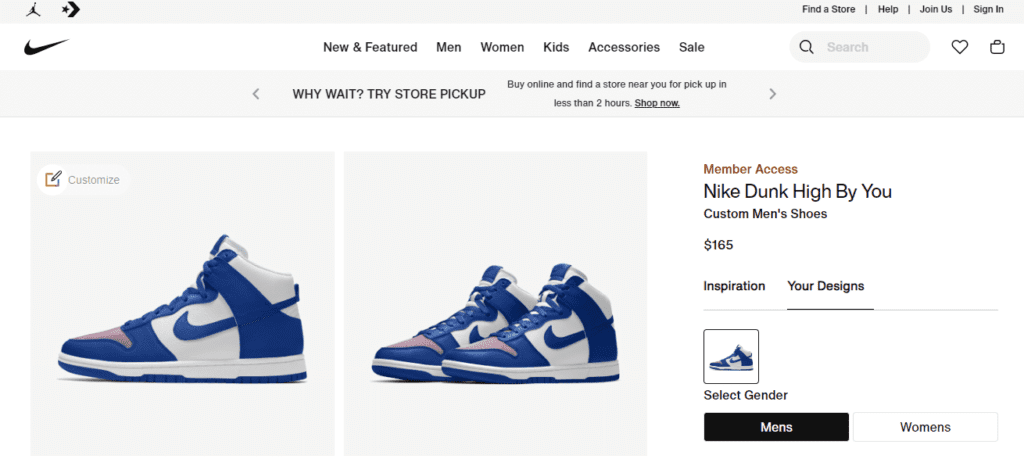
Nike wanted to increase its direct-to-consumer sales channel, so it came up with the idea to sell customizable shoes to the end consumer. This not only increased their sales but also earned huge PR in their industry.

Amazon displays product recommendations that can be brought together with the product that the user is browsing through.
Also Read
Website Redesign – Dynamic Content
Delighting customers with intelligent/smart content is a powerful strategy. By leveraging data-driven content, you can shape the buying journey of potential customers. Now, let’s explore the concept of dynamic content in more detail.
Dynamic content aims to create a personalized experience tailored to each visitor or reader in real-time. A notable example of smart content is Amazon’s product recommendation engine. However, dynamic content encompasses a wide array of manifestations, ranging from personalized fields in emails to entire webpage elements such as images or offers that dynamically adapt based on the viewer’s profile.
The below scenario might help you to have a better understanding of what dynamic content is,
Say, you stumble upon a travel website for the first time. During your initial visit, you explore different destinations, read about exciting activities, and sign up for their newsletter. A few days later, when you revisit the website, it recognizes you as a returning visitor and welcomes you back with a personalized message. Moreover, the website now displays travel recommendations based on your previous interests and preferences, making it easier for you to discover new and enticing destinations that align with your travel style.
Dynamic content isn’t limited to websites alone—it extends its influence to online advertisements as well. Suppose you recently started renovating your home and have been researching interior design websites. Later, you log in to your Facebook and you notice that the ads being displayed are focused on furniture and home decor, reflecting your current interests and needs. These ads were specifically chosen for you based on your browsing history and preferences, allowing advertisers to engage with you in a more targeted and relevant manner.
Dynamic content thrives on personalization and tailoring experiences to individual customers. Whether it’s a travel website offering tailored recommendations or ads that align with your interests, dynamic content leverages data to create engaging interactions that resonate with customers and leave a lasting impression.
Let us explore various aspects of dynamic content in an e-commerce and SaaS company.
E-commerce
SaaS
- Real-time Inventory Updates: E-commerce websites dynamically update product availability, stock levels, and pricing information to provide accurate and current data to users. This ensures transparency and avoids customer disappointment due to out-of-stock items.
- User-Generated Content: Encouraging user-generated reviews, ratings, and comments creates dynamic content that helps potential customers make informed purchase decisions. It builds trust and credibility in the products and brand.
- Personalized Product Recommendations: When a customer visits an e-commerce website, dynamic content algorithms analyze their browsing and purchase history to offer personalized product recommendations. These recommendations can be based on similar products, complementary items, or even popular choices among customers with similar profiles. Dynamically updating these recommendations in real time will help in increasing customer engagement, cross-selling, and upselling opportunities.
- Customized Website Experience: E-commerce websites can dynamically modify their content and layout based on individual customer profiles. The website can also remember customer preferences, such as preferred product categories or sizes, and display relevant options prominently. This level of personalization enhances the user experience and encourages repeat visits.
- Location-based Content: Content can be adjusted based on the user’s geographic location, such as displaying local weather information, nearby store locations, or targeted advertisements.
- A/B Testing: Displaying different variations of content or design elements to different users to measure performance and optimize the user experience.
- Dynamic Pricing and Discounts: E-commerce businesses can employ dynamic pricing strategies that adjust prices based on factors like customer segments, demand, or browsing behavior. For instance, a customer who frequently adds products to their cart but does not complete the purchase may receive personalized discount offers to incentivize them to finalize the transaction. Dynamic pricing helps optimize sales and improve conversion rates.
- Targeted Email Marketing: E-commerce businesses can leverage dynamic content in their email marketing campaigns. By segmenting customers based on their browsing history, purchase behavior, or demographic information, personalized emails can be sent with tailored product recommendations, exclusive offers, or targeted promotions. This level of personalization in email marketing helps increase open rates, click-through rates, and ultimately, conversions.
- Personalized Onboarding: When a user signs up for a SaaS product, dynamic content can be employed to deliver a personalized onboarding experience. By understanding the user’s role, industry, or specific goals, the website can dynamically adapt the onboarding process, providing relevant tutorials, feature highlights, and tips to help the user get started quickly and efficiently.
- Targeted Pricing and Plans: SaaS websites often offer different pricing tiers and plans to cater to various customer segments. Dynamic content can showcase the pricing options and plans that are most relevant to each user, based on their specific needs, company size, or desired features. By tailoring the pricing information to individual users, SaaS websites can increase the likelihood of conversion.
- Contextual Help and Support: SaaS products can integrate dynamic help and support features directly into their websites. For instance, by tracking user behavior and identifying potential pain points, the website can display relevant help documentation, video tutorials, or live chat options to assist users in real time. This dynamic support content helps users navigate the product effectively and addresses their concerns promptly.
- Targeted Feature Promotion: SaaS websites can dynamically showcase specific features or updates to users based on their usage patterns or interests. By analyzing user behavior within the application, the website can highlight relevant features that users may find valuable. This approach helps drive engagement, promotes feature adoption, and improves the overall user experience.
- Customized Demo and Trial Experience: For SaaS products offering demos or free trials, dynamic content can personalize the experience to match the user’s specific needs or interests. By gathering information during the signup process or analyzing user preferences within the trial period, the website can dynamically adjust the content, demonstrating the most relevant features and use cases. This tailored approach increases the likelihood of users discovering the value of the product and converting it into paying customers.
- Dynamic Social Proof: SaaS websites often leverage social proof to build trust and credibility. Dynamic content can display real-time customer testimonials, case studies, or user-generated reviews to demonstrate the product’s value and benefits. By continuously updating and showcasing feedback, SaaS websites can influence the purchasing decisions of potential customers.
Also Read
Examples of dynamic content,
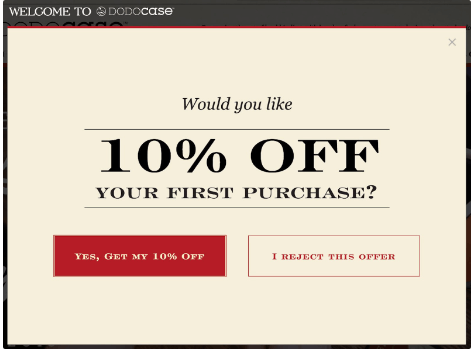
Source
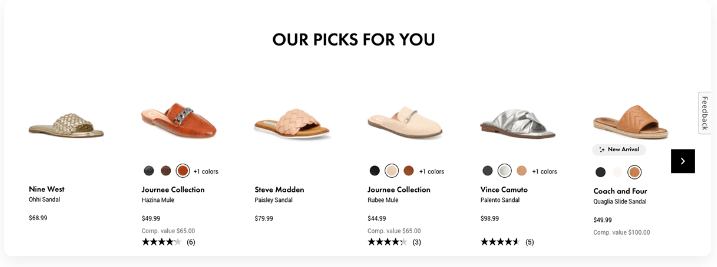
Source
Website Redesign – User Journey
The user journey encompasses the entire process a user goes through when interacting with a website. It includes every touchpoint, right from the initial visit to post-purchase activities. Optimizing the user journey ensures a seamless and satisfying experience. Improving the user journey of a website is essential for enhancing the user experience, increasing conversions, and building customer loyalty. Let us explore some effective ways to improve the user journey of websites.
- Clear and Intuitive Navigation – Design a clear and intuitive site architecture that aligns with the user journey. Categorize products into relevant and logical categories to facilitate easy navigation and browsing
- Streamlined Website Structure – Organize content logically, eliminate unnecessary steps, and avoid overwhelming users with too many options. Simplify the website structure to minimize the number of clicks required to reach important information or complete actions. Aim for a clean and uncluttered design that guides users effortlessly through the website.
- Responsive and Mobile-Friendly Design – With the increasing use of mobile devices, it’s crucial to ensure your website is responsive and mobile-friendly. Ensure to optimize the design and layout in order to provide a seamless experience across different screen sizes.
- Fast Loading Speed – Improve the loading speed of your website to prevent users from getting frustrated and abandoning it. A fast-loading website improves user satisfaction and encourages them to stay engaged.
- Compelling and Relevant Content – Craft high-quality, relevant, and engaging content that meets the needs of your target audience. Use clear and concise language, highlight key information, and present it in an easily scannable format. Make use of visuals, such as images and videos, to enhance the overall user experience and convey information more effectively.
- Clear Call-to-Actions (CTAs) – Use clear and visually appealing call-to-action buttons or links that guide users toward desired actions. Place them strategically throughout the website to prompt users to sign up, make a purchase, contact you, or take other important steps. Ensure that CTAs are easily distinguishable, descriptive, and accessible.
- Run Campaigns – Run Ad campaigns and display ads, to increase brand awareness, and attract potential customers to your e-commerce website. Leverage the power of social media marketing campaigns to engage with your audience, share compelling content, and promote your products. Use social media platforms to drive traffic to your website and encourage user interaction and sharing. Similarly, implement email marketing campaigns to nurture leads, send personalized product recommendations, promote special offers, and re-engage customers who have shown interest in your products.
- Simplify the Checkout Process – Streamline the checkout process to minimize steps and reduce friction. Offer guest checkout options, provide clear progress indicators, and minimize form fields to make it quick and easy for customers to complete their purchases. Implement trusted payment gateways and clearly display accepted payment methods.
- Clear Product Information and Descriptions – Provide detailed and accurate product information, including specifications, features, dimensions, and any relevant details. Use high-quality product images from different angles and allow users to zoom in for a closer look. Incorporate customer reviews and ratings to build trust and help users make informed purchasing decisions.
- Streamline Account Creation – Make the account creation process simple and offer social media login options to reduce friction. Allow users to save their preferences, addresses, and payment details for future purchases. Implement a password recovery feature to assist users who may forget their login credentials. Offer both user and guest login options to cater to different customer preferences. Provide clear benefits for creating an account, such as personalized recommendations, order history tracking, or exclusive discounts. Allow guest checkout for users who prefer a quick and hassle-free shopping experience without the need to create an account. After login or registration, personalize the user experience by displaying relevant product recommendations, saved cart items, or recently viewed products
- User Feedback and Testing – Gather feedback from users through surveys, feedback forms, or user testing sessions. Understand their pain points, challenges, and suggestions for improvement. Use this feedback to refine your website design, navigation, and overall user experience.
Looking for Website Redesign Services?
Seize and experience the transformative impact of Website Redesign Services & Solutions with ColorWhistle.
Recap
Website redesign and website revamping are vital strategies for businesses to adapt to the ever-changing digital landscape and meet user expectations. A well-executed website redesign service goes beyond a visually appealing design and focuses on enhancing the user experience to drive engagement and conversions. Embracing personalization and dynamic content allows businesses to create tailored user journeys that deliver relevant and engaging experiences to individual users.
By understanding the importance of website user experience and leveraging personalization and dynamic content, businesses can revamp their websites to stand out from the competition and achieve their goals in the online realm.
Optimizing this user experience often involves a website redesign, and factors like website redesign cost should be considered to ensure the project aligns with your budget. There are various website redesign packages available, so it’s important to choose one that offers the features and functionalities most crucial to your specific goals.
For interesting and professional digital marketing services, you can contact ColorWhistle by sending us a message or call us at +1 (919) 234-5140, we’ll get back to you at the earliest. We provide services tailored to your requirements that suit your business.
What’s Next?
Now that you’ve had the chance to explore our blog, it’s time to take the next step and see what opportunities await!
Read Similar Content
Wish to Explore Our Services?
Have an Idea? or Project Scope?
In quest of the Perfect Website Redesign Solutions Buddy?
Be unrestricted to click the other trendy writes under this title that suits your needs the best!
- Revamping Your Corporate Brand: Strategies for Successful Website Redesign and Branding
- Large Website Migration Case Studies and Checklists
- Website Redesign Essential & Benefits Guide
- Top 11+ Website Redesign Agencies in the UK
- CMS for Website Redesign : Important Benefits
- Migrating to A New Domain During Website Redesign: Best Practices and Potential Pitfalls
- Top Website Redesign Agencies in USA

